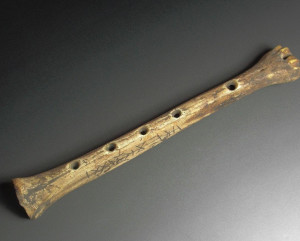The historical development and origin of the bone flute
Bone flutes were first discovered about 8,000 years ago, not only far earlier than the flutes unearthed in the ancient tomb of Ur in Mesopotamia, but also earlier than the flutes made of pottery utensils and those carved on cosmetic plates during the first dynasty of ancient Egypt. The image of the flute similar to the later Arabian bamboo flute is early. It is 2000 years earlier than the flute that appeared in ancient Egypt, and is known as the originator of the flute in my country.

A group of exquisite bone flutes unearthed from the Jiahu site in Henan Province about 9,000 years ago have been recently recognized by experts as the world's earliest wind instruments. There are more than 20 bone flutes with five, six, seven and eight holes belonging to the early, middle and late stages of Jiahu. After research by experts, they have four tones, five tones, six tones and seven tones. The history of the sound scale is advanced to 8,000 years ago.
Animal bones are one of the important materials for the ancient ancestors to make living utensils. Entering written history, with the remarkable progress of human material culture, bone artifacts have been greatly reduced. The word "di" was originally written as "Dí", but the radicals were all made from bamboo, indicating that the bamboo was used to make the flute in the era when the word came into being. Even people at that time didn't even know that their ancestors ever made bone flutes. However, the bone flute did not completely disappear.
Since the use of bamboo flutes in Yale music in the Zhou Dynasty, bamboo has been commonly used in flutes in ancient times, but other materials such as copper, iron, silver, porcelain, jade, etc. are occasionally used. Bone is also one of them, but it seems to be more rare.
 渝公网安备 50010702504639号
渝公网安备 50010702504639号